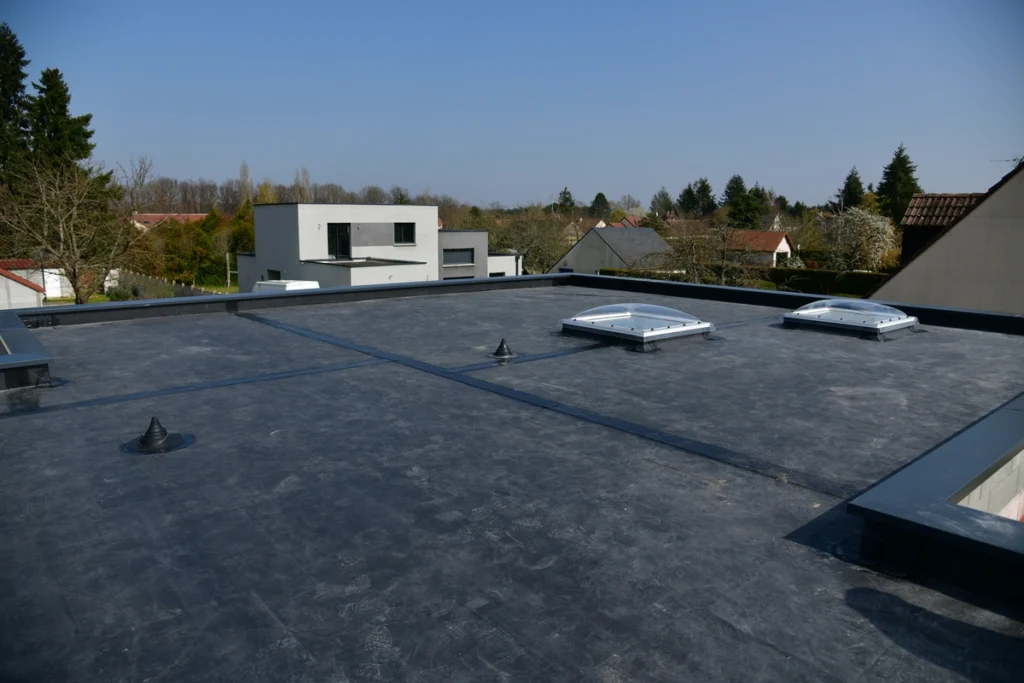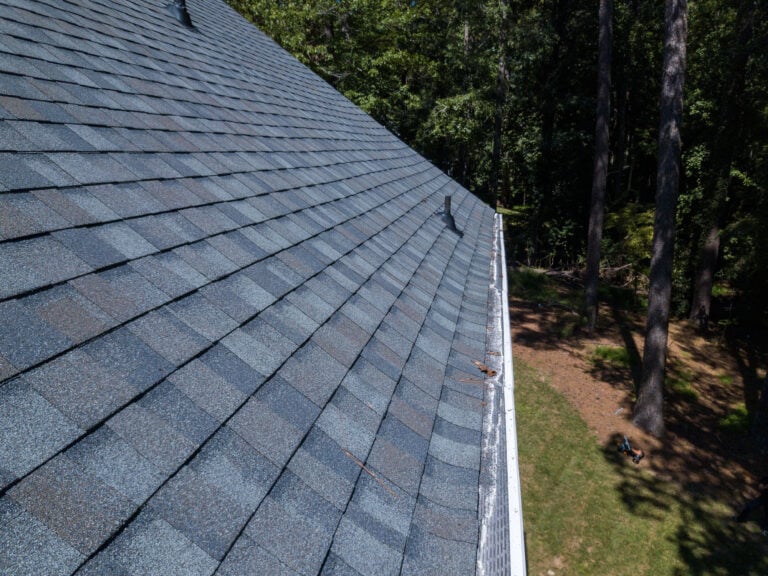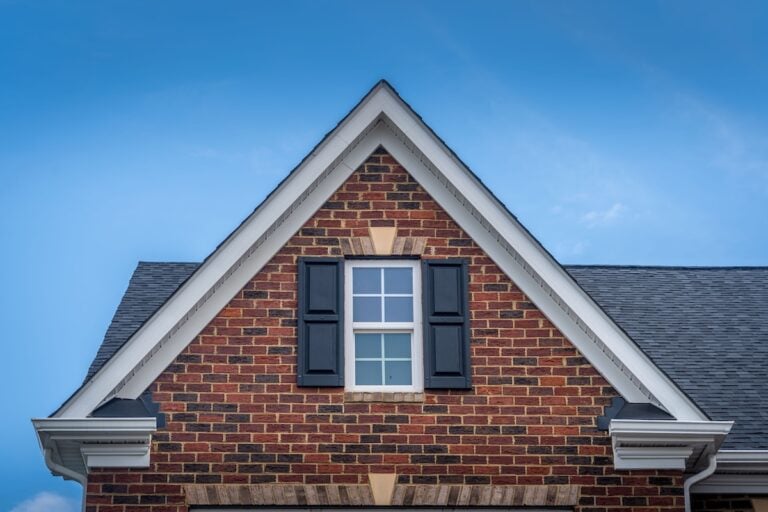Flat roofs are a common feature in many commercial buildings, offering a sleek and modern aesthetic while maximizing usable space. However, like any roofing system, flat roofs require maintenance and eventual replacement to ensure the safety and integrity of the structure. In this guide, we’ll explore the factors influencing flat roof replacement costs and what business and property owners can expect when undertaking this project.
Inside this blog:
- A breakdown of the factors affecting flat roof replacement costs
- The average cost of a flat roof replacement
- 3 bonus factors that can impact flat roof replacement costs
Keep reading to learn more about what you can expect when diving into a flat roof replacement for your commercial property.
💸 Breaking Down Flat Roof Replacement Costs
Replacing a flat roof involves various factors that contribute to the overall cost of the project. Here’s what you need to know:
Roof Size
When it comes to flat roof replacement costs, size matters! The size of your flat roof is a major determinant of the overall expenses involved in the replacement process. Simply put, larger roofs require more materials and labor to cover, which inevitably leads to higher costs.
Type of Roofing Material

Choosing the right roofing material is crucial, as it not only impacts the initial cost but also the long-term durability and maintenance requirements of your roof. There’s a wide array of options available, including EPDM rubber, TPO, PVC, modified bitumen, and built-up roofing (BUR).
Accessibility
The accessibility of your roof can significantly affect replacement costs. If your building has multiple stories or limited access points, roofing contractors may need to invest in specialized equipment or allocate additional labor to complete the project safely and efficiently.
Roofing System Complexity
Some flat roofs boast intricate designs or incorporate features like skylights, HVAC units, or drainage systems. While these elements can enhance the functionality and aesthetic appeal of your building, they can also complicate the replacement process.
Contractors may need to develop customized solutions to work around these features, which can drive up costs. So, if your roof is anything but straightforward, be prepared for some added expenses during the replacement process.
Roofing Contractor
When it comes to flat roof replacement, the roofing contractor you choose can make all the difference. While it may be tempting to opt for the lowest bid, investing in a reputable contractor with a proven track record of quality workmanship is essential.
An experienced contractor will not only ensure that the job is done right the first time but can also help you avoid costly repairs or premature replacement down the line. Thus, while it may seem like a splurge upfront, choosing the right contractor can ultimately save you money in the long run.
📊 Average Cost for a Flat Roof Replacement
While the cost of flat roof replacement can vary widely depending on the factors mentioned above, here’s a general breakdown of average costs:
- EPDM Rubber: $5 to $8 per square foot
- TPO: $6 to $9 per square foot
- PVC: $7 to $10 per square foot
- Modified Bitumen: $6 to $10 per square foot
- Built-Up Roofing (BUR): $5 to $9 per square foot
These costs typically include materials, labor, disposal of old roofing materials, and any necessary permits or inspections. Keep in mind that additional factors, such as roof slope, insulation requirements, and warranty options, can also impact the final cost.
3 BONUS Factors That Can Affect Flat Roof Replacement Costs
When budgeting for flat roof replacement, consider the following factors that may influence the overall cost:
1. Roof Preparation
Before diving into a flat roof replacement project, it’s essential to assess the condition of your existing roof. If your roof requires repairs or extensive preparation work before replacement can commence, such as removing old layers of roofing material or addressing underlying structural damage, these additional tasks can significantly impact the overall cost.
So, be sure to factor in any necessary roof preparation work when budgeting for your replacement project to ensure a smooth and successful outcome.
2. Warranty Coverage

When purchasing roofing materials for your flat roof replacement, it’s essential to consider the warranty coverage offered by the manufacturer. While opting for materials with extended warranties may increase upfront costs, they can provide added protection and peace of mind for property owners. Extended warranties typically cover repair or replacement costs in case of manufacturing defects or premature failure, helping to offset potential expenses down the line.
3. Geographic Location
The cost of flat roof replacement can vary significantly depending on your geographic location. Factors such as the cost of labor, availability of materials, and local market rates can all impact the overall cost of the project. Generally, urban areas tend to have higher labor and material costs than rural areas, so it’s essential to consider your location when budgeting for your replacement project.
🏗️ Upgrade Your Property With a Flat Roof Installation
While flat roof replacement may represent a significant investment for business and property owners, it’s a crucial step in maintaining the safety, integrity, and functionality of your building. By understanding the factors influencing replacement costs and working with a reputable roofing contractor, you can ensure a smooth and successful project that protects your investment for years to come.
Contact our expert team of roofers at Palladium Roofing today and experience reliable communication and industry-competitive warranties. We’ll make sure your property stands strong with a resilient and attractive roof.





